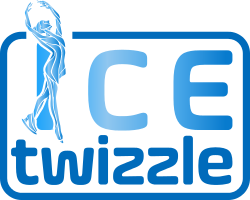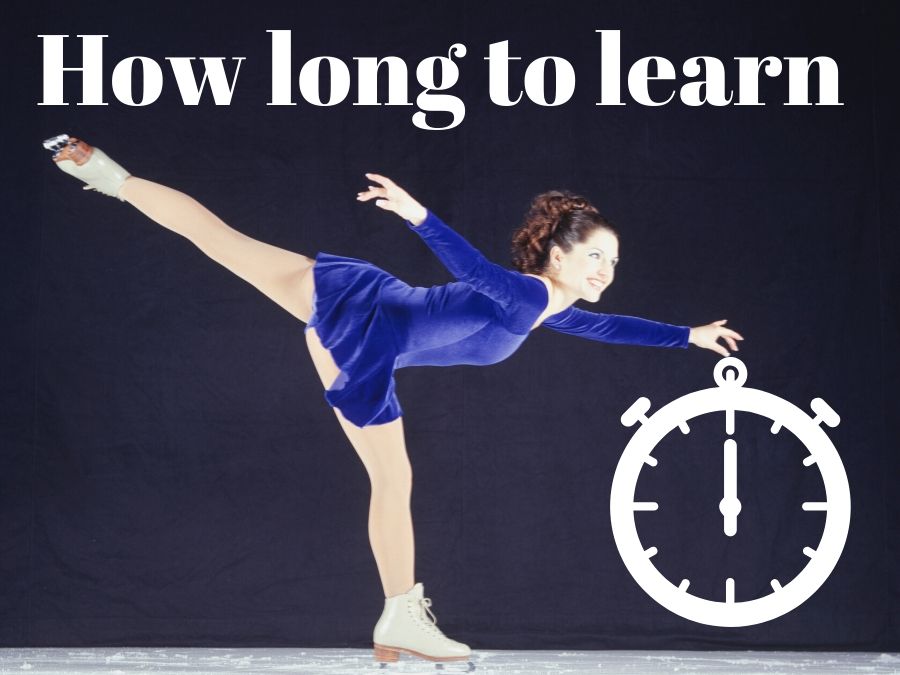If you are going ice skating and are wondering ‘How long does it take to learn to ice skate?’ There are several factors that will affect how long it will take you to learn.
‘So how long does it take to learn to ice skate?’ It should probably take you between 7 to 10 hours to get the basics. That’s not all in one day, that’s over two months. That’s once a week for an hour or so. If you can go twice a week, even better. Several visits to the rink will allow you to sleep between each practice period, which makes the process of learning easier.
Advertisement feature

EDEA figure skating E-Guards – Check them out here (link to Amazon)
As I said, about 7 to 10 hours, but that depends on what you call the basics. The basics I am talking about are the ability to glide on two feet, to be able to turn around on the spot and the ability to move forwards with some form of control.
Group lessons are great for learning to skate, but if you need to learn in a hurry for a date or something, you only have group lessons once a week. Then you can do a good job on your own (just to get your basic balance and get moving, you will need lessons for the more complicated stuff), especially if you practice a couple of times a week.
How often should you go ice skating when learning to ice skate?
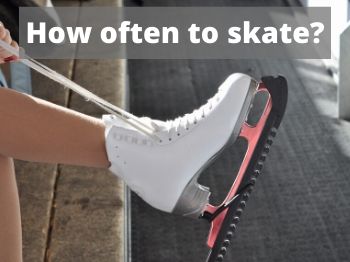
You will learn if you go once a week. The problem is when you go once once a week, you spend half of your session trying to remember what you were doing last week. If you can go twice a week, you will add more to your training each time and your learning will be faster.
Don’t be afraid to hang on to side when learning to ice skate
It’s best to learn to walk before you learn to run. So when you get on the ice for the first time, don’t be afraid or embarrassed to hold the barrier as you go round. As you get your balance you will naturally start to hover your hand over it, instead of holding it.
Hover don’t hold
I spoke to a professional coach about this. She said that it’s best to hover your hand over as soon as possible. The trouble is when you hold the hand rail, you tend to pull yourself along. This causes you to shuffle your feet. So you are pulling yourself along and shuffling your feet instead of skating.
The other issue with holding the handrail and pulling yourself along is that for a while your hand is in front of you, but then for a moment it is behind you. This is a problem, because it sends your weight back and there is a risk of falling over backwards.
Getting onto the ice for the first time to learn to ice skate
Some top tips for stepping out onto the ice for the first time.
Stepping onto the ice when learning to ice skate
OK. Here are a few pointers. A coach once said to me that if you are putting someone onto the ice for the first time, then get them to step on sideways. That is really good advice.
If you step onto the forwards, your skate could slip from under you as you step onto the ice. Step on sideways whilst holding the barrier. That way your skate won’t slide away from you.
Body position when learning to ice skate
You want bent knees. When I was learning to surf years ago. There was this saying ‘stand straight up, fall straight over’. That is true of ice skating too. So keep those knees bent.
I have had a word with a professional figure skating coach about the best positions when you are starting out. She gave the following advice.
Put your arms out to the side and slightly in front. So they are in a gentle V shape. That position will give you the most balance and having your arms slightly out in front will help to prevent falling backwards.
Foot position when learning to skate
You need your feet to be in a V shape. That is to say, that, your heels are closer together than your toes. Not an extreme V shape. You just don’t want your feet to be parallel.
When your feet are parallel, you have no traction, there is nothing to push from. So you end up going nowhere, just running on the spot. If you do go anywhere, its because you are toe pushing, not a desirable way to skate.
How to skate forward
Whilst your feet are in a V shape. Start to push forward stepping onto each foot in the center of the blade. This might make a ‘clip clop’ noise. You might feel like the skates are sliding away from you. This soon turns into skating.
What are the basics of ice skating?
The basics of ice skating are, at first being able to get up if you fall over. It is almost impossible to get up from sitting on your bum. You need to get onto all fours on your front, put one skate on the ice and push up from that (you can push with your hands off your knee if you need to).
Also, realizing that you can stand there on one spot and be stable. You don’t have to move unless you want to. Then being able to push forward and begin to skate.
Once moving, a basic ability it being able to turn and stop are the fundamentals of ice skating.
How long does it take to learn to ice skate in terms of getting over the fear factor
This section is mainly for the adults. Children don’t tend to fear as much as adults. Its not actually very often the ability of the adult that hinders the learning process, its often the fear. As adults we fear more. Succeeding is often as much getting over the fear as learning the skill.
This is another great reason to skate a couple of times a week. As well as helping you to learn faster, it helps with confidence too.
Learning the basics in order
Its best to learn to walk before you learn to run. Learning how to get up off the ice, learning how to push and glide on two feet are important.
It is best to learn the basics. All to often, novice skaters try more advanced moves that they have seen other people do, often resulting in injury. The best way to learn in order is to take a learn to skate course.
How long does it take to learn to skate with lessons
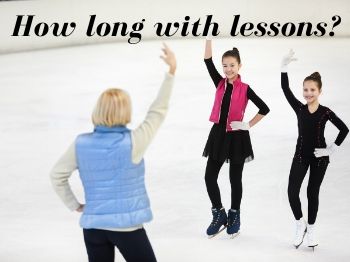
Well, predictably, with lessons, it will take less time to get much better in the long run.
You can learn the basics on your own, especially if you are in a hurry and can’t wait for group lessons. Though a coach always helps. If you are in it for the long haul, then lessons are the way to go.
The benefits of figure skating lessons
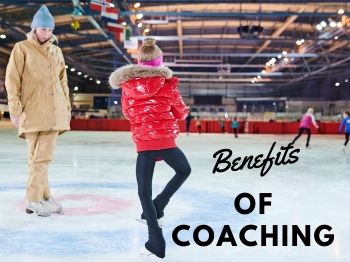
When you take lessons or join a learn to skate course, you will be taught elements properly. You will also be taught in the correct order. Which is important. As you are taught, the next element you learn, naturally follows on from the previous. This gives a continuity and quicker progression.
Learn to skate group classes are an affordable way to learn for skaters of any age. Learn to skate courses do differ slightly from different countries, but they all offer a similar theme of professional coaching following a specified criteria.
Learn to skate courses do push you to do more. At the same time, they hold you back enough to make the learning structured and safer.
How long does it take to learn to skate the more complicated stuff?
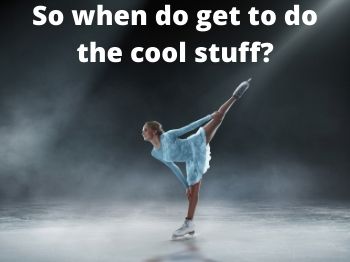
Generally speaking, you are looking at about the six month mark to a year after you start skating, before you get to do the complicated stuff.
It depends how much aptitude you have for the sport and how often you practice. As a general rule though. If you are having coaching or group lessons, you start jumping, spinning and doing spirals at about the six month mark and usually before the end of the first year.
Learning the fundamental skills in ice skating before you start to jump and spin on ice
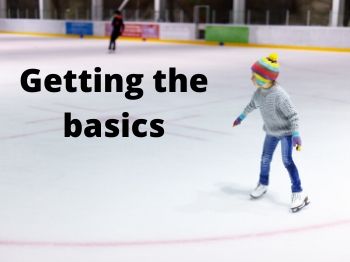
Once you have the basics (the very basics of moving forwards, stopping and turning), you move on to.
- Skating on one leg
- Skating backwards
- Skating on different edges
- Edge control
- More complex turns
Once you have those down. You will start to learn other elements like rockers, brackets and maybe spirals etc.
After you have learned the basics
After you have the basics, you will be able to start doing jumps and spins, under the tuition of a coach.
How long does it take to learn to ice skate on your own?
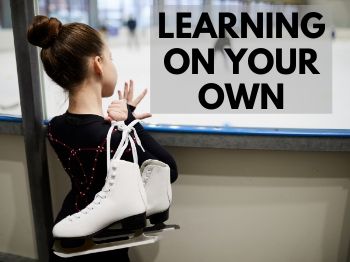
Well, the first question should be, ‘Can you learn to ice skate on your own?’ The answer is yes. You can, but only to a certain standard.
You can definitely learn on your own, especially in the first instance, where you are just getting onto the ice, getting your balance and learning how to move forward.
It will still take you about 7 to 10 hours on ice to get a basic feel for balance, be able to stand up and start to move forward. The trouble is, without a coach, you probably won’t be shown how to get up off the ice should you fall and you won’t be shown the basic safe skating arm and body positions.
So yes, you can learn to skate the real basics on your own, but you will be stuck there. There is no real way of progressing past the basics without some tuition.
How long does it take to learn to skate jumps, spins and spirals on my own?

Don’t even try. That is my advice. It will almost certainly result in injury.
Forever, it will take you ages and that’s if you can ever do it. They are far more complicated than they look.
Remember, when you see someone do a jump or a spin on T.V, they have spend hundreds, quite possibly thousands of hours practicing those elements under professional tuition.
The benefits of learning to skate complex elements with a coach
There is no real way of learning spins and jumps without a coach. If you are going to be learning these elements, you need a coach.
There are so many benefits to having a coach, it is hard to list them. When it comes to jumps and spins, they are essential. A coach can teach you the set up for a jump or a spin (how to go into it), arm and body position, spitting the element up into it’s parts, making it easier to learn. The also teach you the exit (landing position) and so much more.
If you liked this article, you might enjoy the article ‘Can you learn to ice skate on your own?’
This article looks at learning to ice skate on your own and the differences between that and having coaching. The article covers.
- Can you learn to skate on your own?
- Getting the basics
- The rate that you learn versus coaching
And much more. So if you are thinking of learning to ice skate, then check out ‘Can you learn to ice skate on your own?’ by clicking here.
